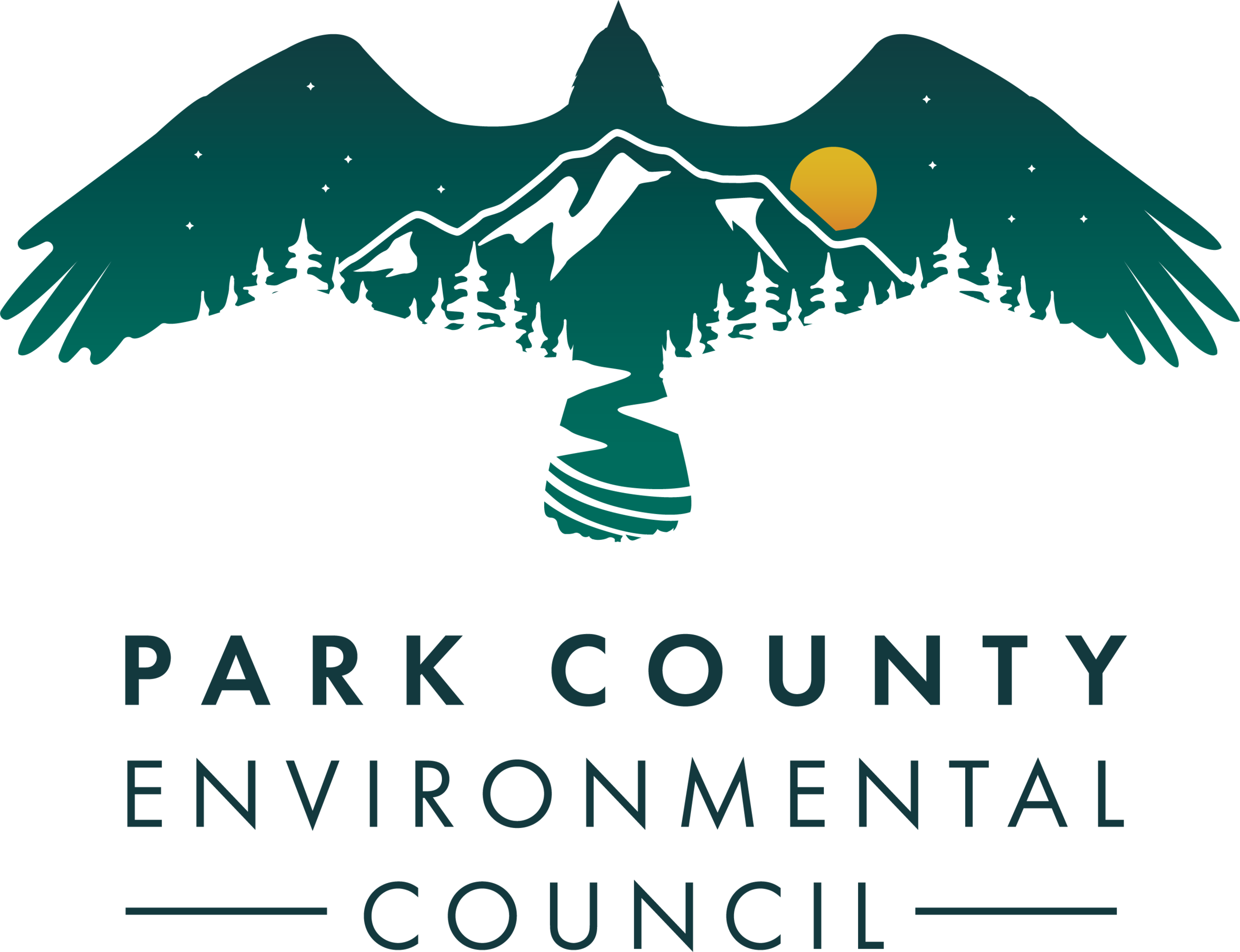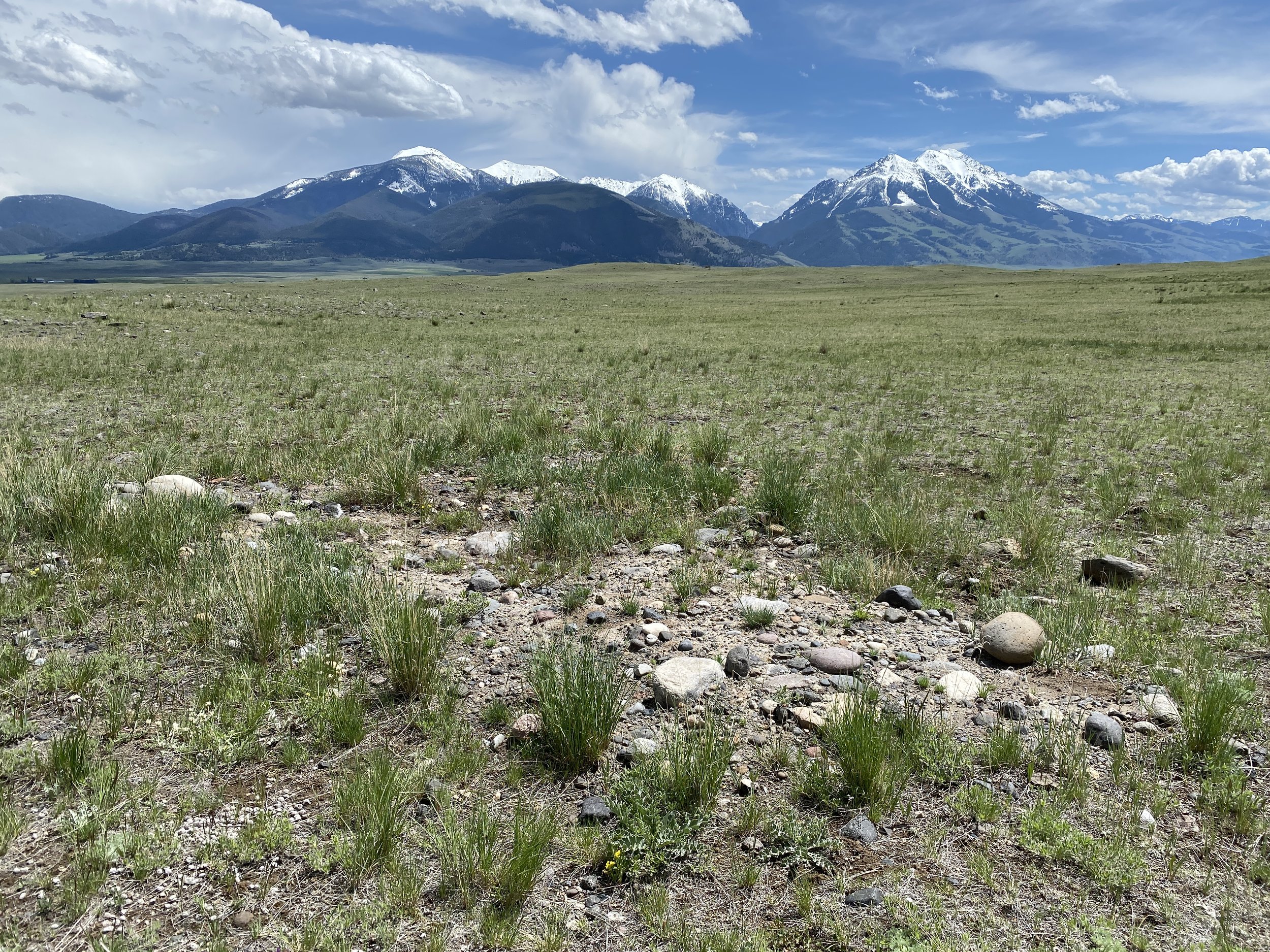Proposed Gravel Pit Near Emigrant: What You Need to Know
A test pit at the proposed gravel pit site north of Emigrant, with Chico Peak and Emigrant peak in the distance.
On June 1st, we joined neighbors at a public meeting on a proposed gravel pit in Emigrant. The meeting was hosted by the Montana Department of Natural Resources and Conservation (DNRC).
DNRC is currently seeking public comment on their proposal to lease state trust land north of Emigrant for a gravel operation. Unfortunately, they gave no specifics about their plan. Last Friday, we walked the proposed site with neighbors. It’s a beautiful section of state land that provides winter range to elk, pronghorn, and grizzly bears (see map below). Everyone agreed that this state land is not the place for an industrial gravel pit.
We are writing to share what we learned with you today, so that you can share with your friends and neighbors and submit comments. Our knowledge of this land and proposal is limited, so please let us know if you have any additional concerns!
DNRC needs to hear from our community. Submit comments HERE until June 30. You can also contact Zachary Winfield at Zackary.winfield@mt.gov or give him a call at 406-444-9518 to learn more. We submitted a public information request and will share what else we learn.
Here is what we know for now:
Why DNRC wants to lease state lands for gravel
DNRC stated at the outset of last week’s meeting that there is no official project planned at this time. They said they have, however, received numerous requests for development of a gravel source in Paradise Valley, citing the large demand for the construction material in the area and by Yellowstone National Park.
DNRC looked at state lands in the valley and used several criteria to narrow their site selection: a spot at least half a mile from the nearest residence, minimal cultural resource significance/impacts, and no major groundwater or surface water impacts. They determined that the northwest portion Section 22, located approximately 1.5 miles north of Emigrant off of Old Yellowstone Trail North met all of their selection criteria (see below map).
DNRC said that they will evaluate public comments on their proposal. They encouraged community members to raise as many issues as possible. Because this is state trust land, they can put additional restrictions on any gravel operations, including limiting hours, and prohibiting an asphalt plant. They also committed to coming back to Emigrant for another meeting.
Once they evaluate our community concerns, they will release a gravel pit proposal with site criteria. Next, it will go out to bid. Once a contractor is selected, that operator will need to apply for the necessary permits with Montana Department of Environmental Quality (DEQ). Unfortunately our opportunity to weigh-in at that stage has been dramatically reduced by a 2021 bill that amended the open cut mining laws in Montana, HB 599. Read more here.
Most importantly, DNRC needs to hear our community’s comments, thoughts, and ideas regarding the proposed gravel pit. DNRC will use our comments to establish their operating criteria for the proposed operation. These criteria will potentially determine the size and scope of the project, or perhaps determine whether DNRC moves forward with the proposal at all.
Concerns with Gravel Pit
The following are the primary considerations and concerns we have with the proposed gravel pit at this time:
Wildlife: Section 22 provides crucial low elevation habitat for elk, mule deer, antelope, long billed curlew, raptors, and song birds. It is located adjacent to prime grizzly bear and wolf habitat in the Custer Gallatin National Forest. While a proposed 20-30 acre area of disturbance occupies only a fraction of the state section, the open nature of the landscape makes even a small footprint have a much larger impact on area wildlife. Additionally, the entire section could be available for expansion over time.
Noise: Gravel pits generate noise, no matter how secluded their placement. This one will be no different. The noise generated by the mining equipment, haul trucks, and general operation will create disturbance for neighboring residences and disrupt wildlife in the area. The area winds, which shift in direction, will carry that sound some distance.
Dust: The raw material needed for crushed gravel needs to be dry in order for it to be processed. This will create a constant source of dust, which will affect air quality and be a nuisance to area residents. It will also create a visual impact that will be seen from anywhere in the Paradise Valley whenever the pit is operating.
Cultural Resources: This area likely contains rare and important Native American cultural resources. Its location as a grassland between the Yellowstone River and the foothills of the Gallatin Mountains means it was likely an important area for hunting and foraging.
Hours of Operation: If the proposal goes out to bid, then the hours of operation must be limited to weekdays and daylight (9-5) hours of operation only.
Other Related Operations: If the proposed gravel plant goes to bid, it should be permitted only for gravel and fill material production only. No asphalt processing, nor concrete batch plant should be allowed to operate in tandem with the gravel mining.
Traffic impacts: We have a number of concerns about traffic. It seems that a new road would be needed to access the area. How many trucks per day in and out of the operation would be anticipated? This kind of traffic creates noise, dust and other impacts on the surrounding neighborhood and beyond.
Noxious and Invasive Weeds: If the proposed pit goes to bid, it must be operated in compliance with the Montana Department of Agriculture standards to be certified weed-free.
Size and Footprint: The total footprint should not exceed 20 acres in area over the projected lifetime of the pit’s operation.
Open Space: As Paradise Valley continues to see significant growth and development, the remaining open space in the valley becomes more and more valuable for its intrinsic undeveloped nature, with both private and public lands. This only makes the proposed gravel pit location on Section 22 all-the-more impactful, if it moves forward. While a gravel pit will not close access to the entire section, it will make the public’s enjoyment of their time there far more diminished than if it wasn’t there and may prohibit the public use altogether.
Hunting and Recreation: Following on the open space comment above, the state lands in Paradise Valley, including Section 22, provide valuable opportunities for hunting and recreation. Public lands in the valley bottom provide opportunities for outdoor recreation year-round, requiring ease of access and moderate terrain (as opposed to the more rugged forested national forest lands). As we note in the wildlife comment, these state sections are invaluable for local hunters due to the abundance of game that move through the area.
Bonding: There are too many examples of inadequate bonding for reclamation of mining projects in the state of Montana. While no amount of money will ever return the disturbance caused by a gravel pit to its original state, we recommend additional bonding be put into place before any lease of Section 22 that will ensure the abundant forage and habitat present at the site be restored in the reclamation process.
Development of this land will have a lasting negative impact on an important public space in an ever-more-crowded part of the state that relies considerably on tourism and recreation. Being out of sight will not make this gravel pit out of mind.
Park County already has several gravel resources currently operating. The county currently has access to a site in the Six Mile area, and there is another private gravel pit in the Pine Creek area. There has been no discussion, or vocal demand for addition, or new gravel resources by our community.
We are currently amply supplied. We do not think Park County needs a new gravel resource, especially one that comes with such a great impact to our public lands.
We encourage you to send your individual comments HERE . In addition you can add your name to PCEC’s formal comment that we will submit to DNRC below.
Looking west from Old Yellowstone Trail N at the proposed gravel pit location.



